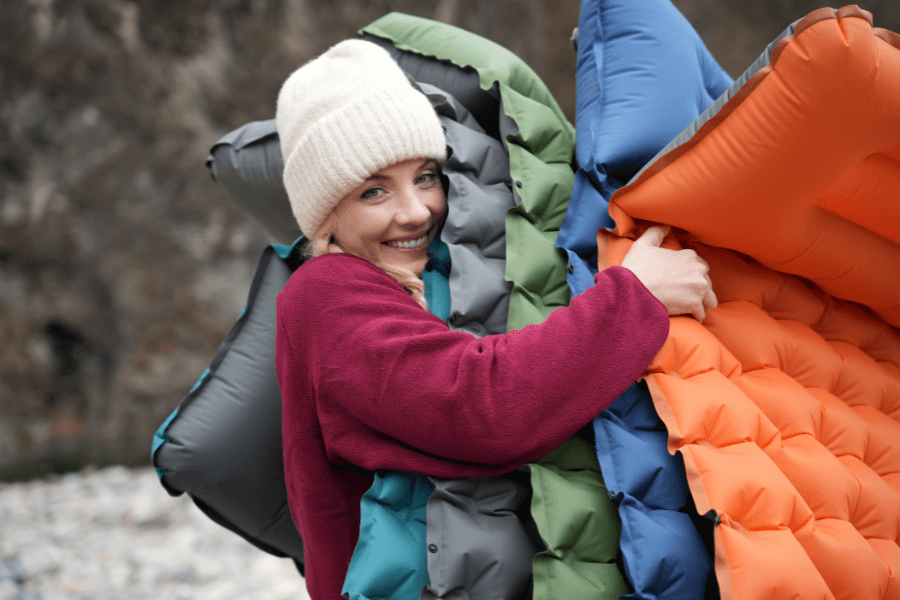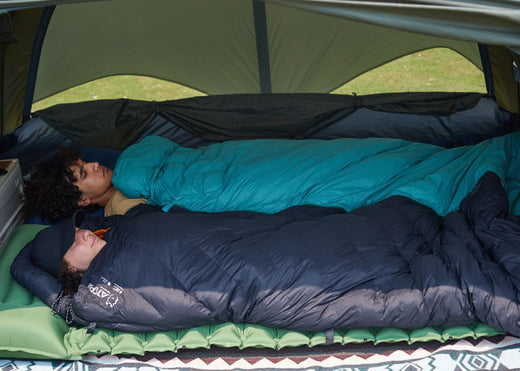All mountaineers and backpackers wish have a better night at camp. Back in the day, the biggest obstacle was creating comfort on the cold hard ground where we make camp. Throughout the night, the cold ground can rob your body of heat, which means waking up tired and robbed of the essential energy to tackle the next day’s objective. Sure, you want something thick and plush, but perhaps the most important function of your sleeping pad is its ability to resist the cold. This is what makes sleeping pads so crucial to resting better. We measure this function with R-value.
Technically, R-value is a measure of thermal resistance; the higher the R-value, the more thermally resistant the material or structure is.Our team believes that R-value is also the best way to measure the insulation of our pads.
Why does Sleeping Pad R-value Matter?
If you were to roll out your sleeping bag and laying directly on the ground, you would quickly get cold due to conductive heat loss between your warm body and the cold ground. The compressed down would fail to create an insulative layer between the two. By selecting an appropriately insulated sleeping pad, you’ll stay warm throughout the night, and wake up prepared for the trail. This process is what makes a sleeping pad so important.
What R-value should I look for in a new sleeping pad?
If you know the R-value of your existing sleeping pad, soon you can decide if your next pad should be warmer, cooler, or about the same across many brands. For different seasons and temperature conditions, we recommend choosing sleeping pads with different R-values as follows:


Many products on the market claim to have high R-values, but these claims are often not backed by standardized testing. However, ATEPA sleeping pads are different. Their R-values are determined strictly according to European and American standards, ensuring that users can trust the insulation ratings. Whether you're an experienced camper or a first-time user, you can choose ATEPA with confidence, knowing that their products are reliable and honest, suitable for all ages.
How do sleeping bag temperature ratings relate to R-values?
Most people want their entire sleep system – clothing, sleeping bag, sleeping pad, and shelter – to keep them reasonably warm at night. And many consumers focus on sleeping bag temperature ratings. For example, a warm sleeper might decide that for a trip with forecast low temperatures in the 40-50 F (4-10 C) range, a sleeping bag with an EN/ISO lower limit rating of 40 F (4 C) should work well. The EN/ISO testing protocol requires a zipped up sleeping bag with the hood cinched along with several other requirements including using an R 4.8 sleeping pad.—ATEPA Sleeping pad AM2403

If your sleeping pad is substantially less than R 4.8, you’ll lose more heat to the ground, and you might not be warm enough in an EN 40 F (4 C) sleeping bag on a 45 F (7 C) night. One paper claims (PDF) that using an R 1.3 or lower pad could cut 10 F (6 C) from the effective rating of a sleeping bag.



Leave a comment
All comments are moderated before being published.
This site is protected by hCaptcha and the hCaptcha Privacy Policy and Terms of Service apply.